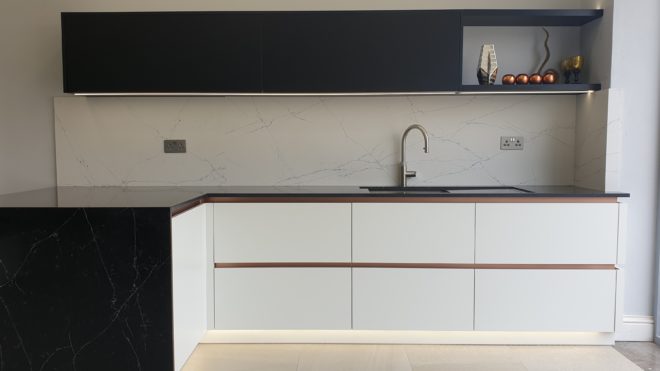In our recent blog about Kitchen Essentials, we talked about the importance of lighting and what you need to consider when planning and designing your kitchen. In this blog we will look at the different types of lighting that are most commonly installed as part of a kitchen fit out, where you can install lighting elements, the differences and most importantly, how you control the mood!
Location, Location, Location
To help you illuminate your kitchen, and create the ambience you are looking for, there are a number of places you can install lighting. These can be various different types and even colours. Obviously you will have ceiling lights but apart from those, there are several places in your kitchen you can choose to install additional lighting:
Above wall units
Lighting above your kitchen units are often installed simply to provide a nice ‘glow’ around your brand new kitchen! There are no practical benefits as they don’t illuminate a work surface for example, but they do look nice, especially if you have a kitchen diner or kitchen / open living area as these can provide great mood lighting when watching TV or relaxing without the main lights on.
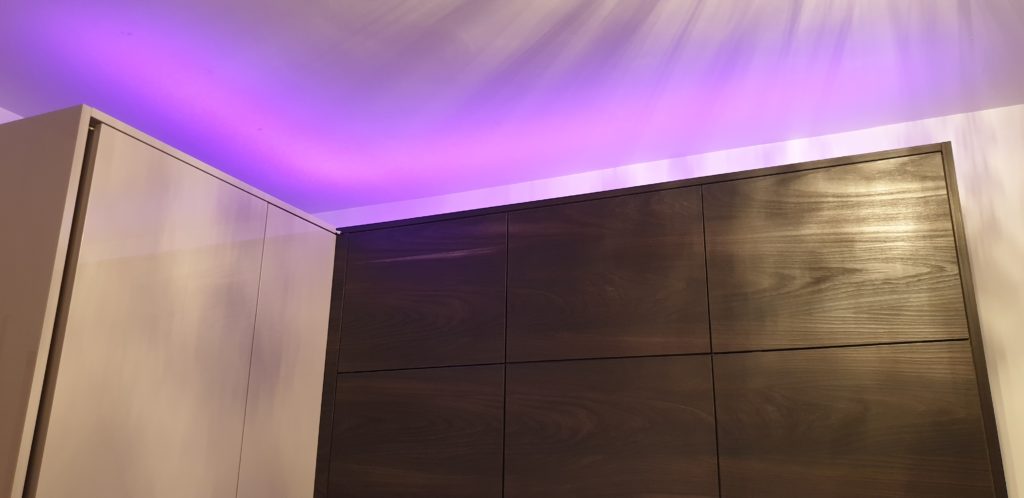
Below wall units
Lighting on the underside of your wall units is the most common kitchen lighting, as it’s practical to provide focussed lighting to your work surfaces when preparing food. There are various types of lights that can be installed beneath your wall units; from individual light units, to LED strips.
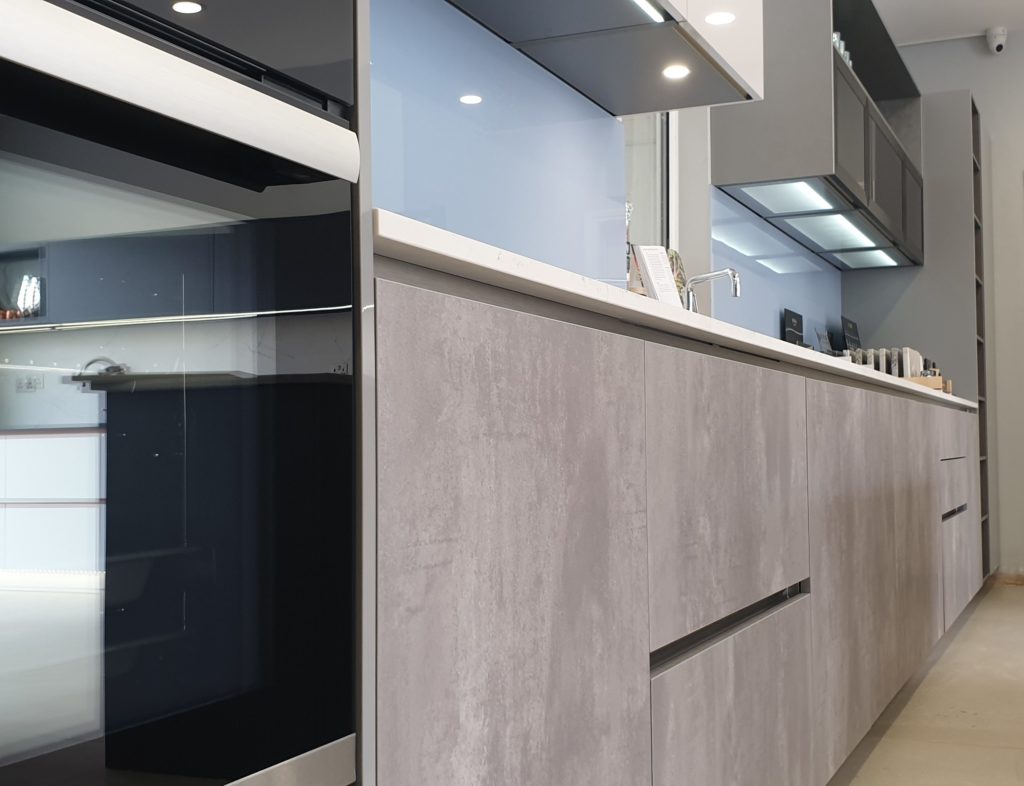
The number of lights you need will depend on the length of your wall unit run. You’ll need to consider this carefully when planning your kitchen layout, as the provision of electrical wiring will be dependent on the number of lights as well as how you intend on controlling them.
Plinth lights
Plinth lighting, either installed in the plinth itself, or just below the base units to light up the plinth can provide a beautiful effect and light up your kitchen to provide a nice glow around all of your base units. Provision for power is relatively easy it can be concealed beneath your base units and behind the plinth – However, if you are installing plinth lights on an island unit for example, you will need to ensure that your building contractor runs the required electrical wiring to the right location before laying your floor.
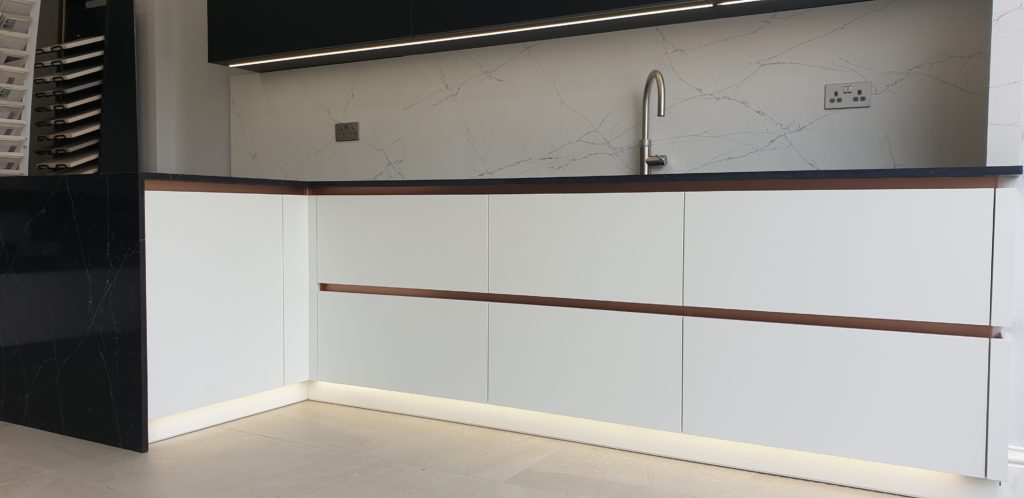
One thing to consider if you’ve opted for LED strip lighting attached to the underside of the base unit is whether or not your integrated appliances will affect a continuous run. For example, an integrated fridge when opened would expose your strip light so bear this in mind when planning.
In Cabinet lighting
In cabinet lighting has a few different options. Drawer lighting is a nice touch and can provide lit up glass sides for your drawers which illuminates the drawer when you open it. An alternative is integrated lighting for your wall or larder units that are activated by a sensor to light up the cabinet when you open the door and switch off when you close the door.
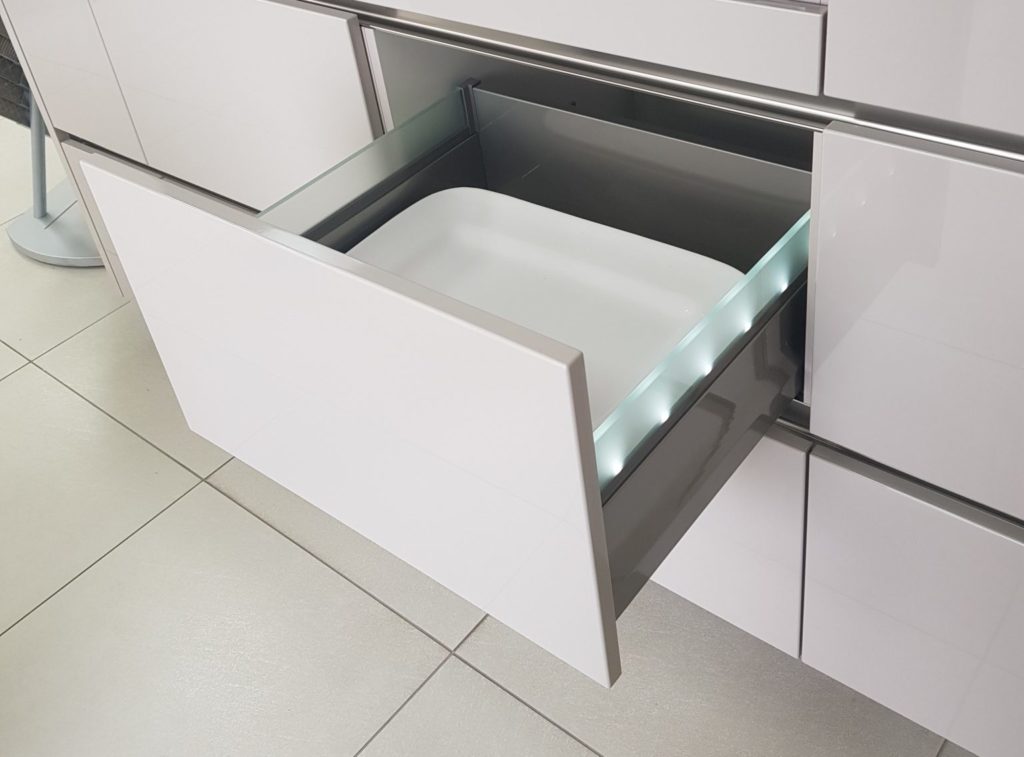
Some in cabinet lighting such as the illuminated drawer shown above are actually battery operated so does not require any wiring – However there are different options available and some will require electrical power for each drawer unit so be sure to discuss this with your kitchen designer during planning.
Focussed lights
Focussed ceiling lights can be used to target lighting to a particular area or provide a highlighting effect for a part of your kitchen. There are two common approaches which enable you to do this. One is to locate ceiling spot lights centrally to your wall or larder units to show off your beautiful kitchen cabinets and the second is to install low hanging pendant lighting over an island or dining area. Both of these practices require intricate planning and design early on to ensure electrical wiring can be placed precisely.
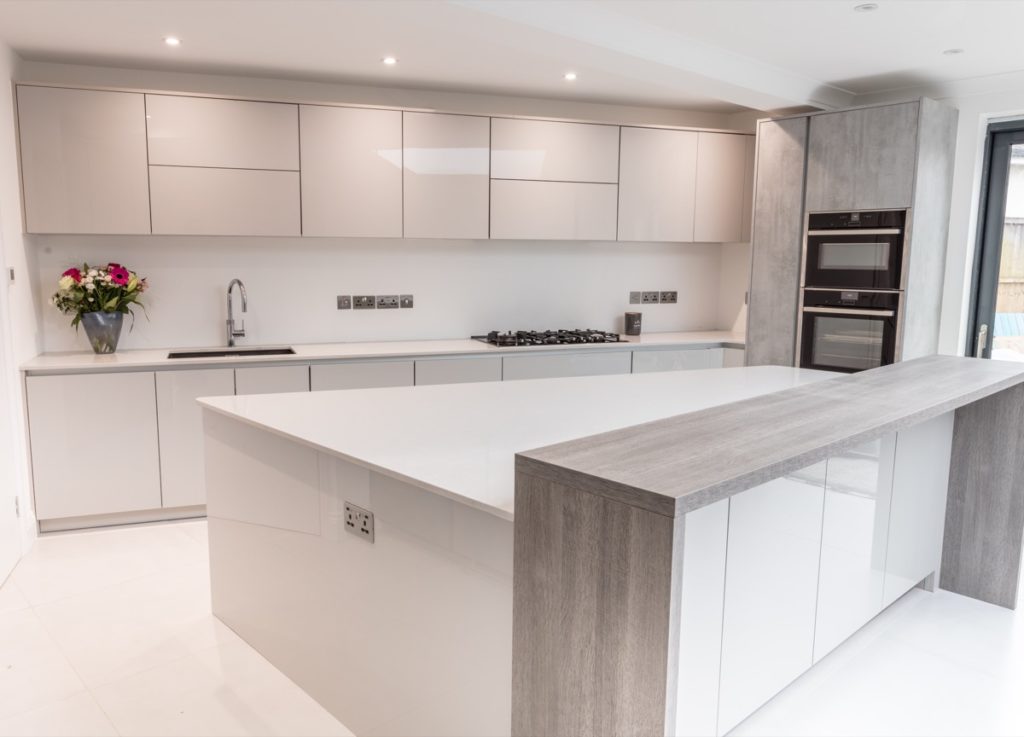
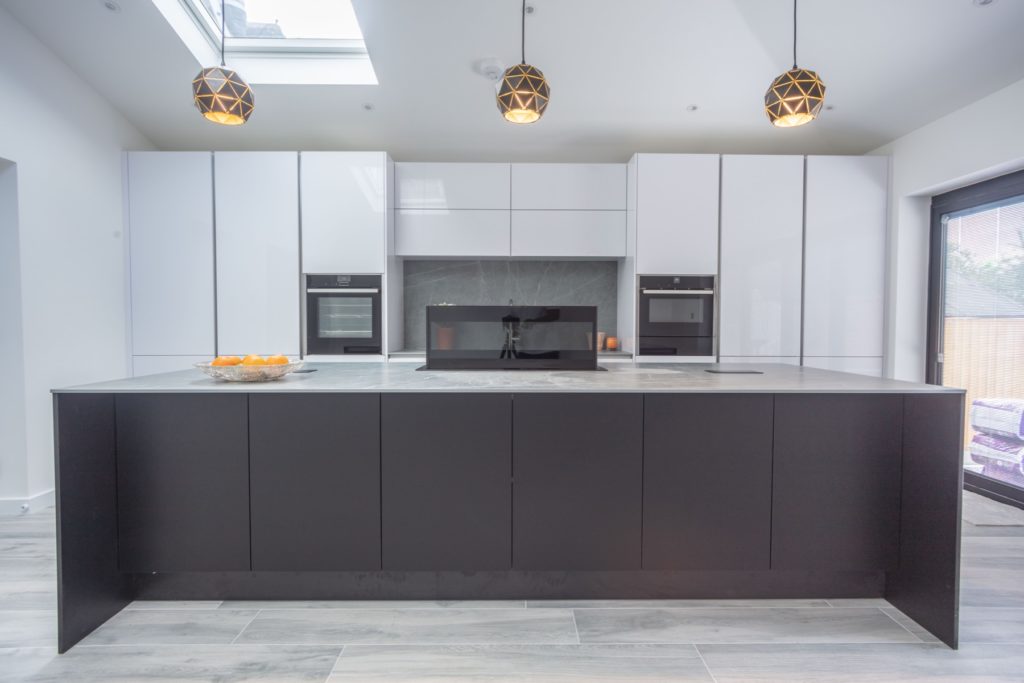
Types of Lighting
There are lots of different types and styles of kitchen lighting available to you and what you opt for will generally depend on the location you want to install them. LED lights have more or less completely replaced traditional lighting types due to their energy saving benefits, longer lasting attributes and relative cost.
LED lights typically operate at 12V or 24V so require the installation of a driver or transformer to operate them. The 240v mains electrical wiring feeds the LED driver which outputs 12v/24v to the LED lights. The quantity and size of the driver required will depend on the power draw of each light – this is measured in Watts.
Planning where your lights and drivers will be installed is an important consideration during the building fit out stages so that your electrician can provision the correct lighting wiring and any required switches. Knowing how you want the lighting to be controlled is another important factor as it may require the provision of electrical switches or connecting runs together to control from a single location – see the next section for more details.
LED Strip lighting
By far my favourite type of lighting because they are so versatile! LED strip lighting has a range of applications and you can find strip lighting to mount on the back of wall mounted TVs, around furniture and in your kitchen. LED strip lighting can be installed relatively easily and can be attached to the top of wall units, the underside of base units and beneath wall units with the integrated aluminium rails to conceal them.
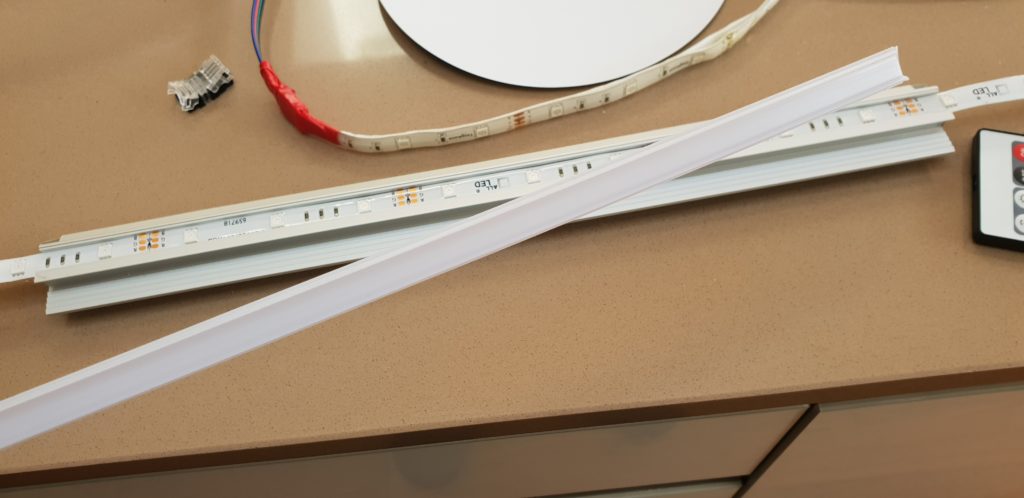
The quantity and power of the drivers required to power your LED strips will depend on the length of the run as well as their location. A general rule of thumb for standard LED lights is to provision 5W power for every metre in length, so a 5m LED strip would require a 25W (5×5) driver. RGB / Colour LEDs typically require about 7W power per meter so a 5m strip would need a 35W Driver.
Under Cabinet Lighting
Because the underside of wall units are the most common place to install lighting due to the practicality it provides, you’ll find an endless supply of different styles. Some lights will sit an angle between the wall and underside of the unit and others will be designed to be fully integrated into the wall unit itself to be hidden away from plain view.

LED Spot Lights
Typically ceiling mounted, LED spot lights are installed in most modern homes. In your kitchen, spot lights are generally used to provide focussed lighting where required.
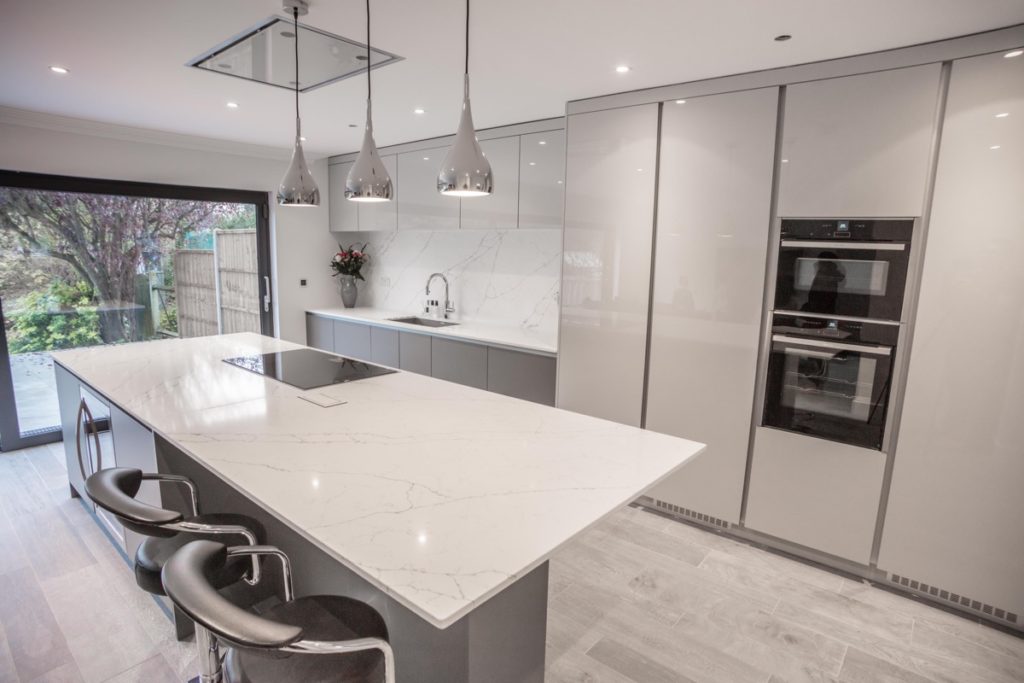
Your focused lights can also include hanging pendants as a feature to a central island or dining table like one of our projects above.
Lighting control
How you switch your lights on and off, how you dim them and maybe how you change the colour of them is an all important decision. Having a simple switch works but there are also some cool ways to control your lights so its definitely worth researching the options available. At the very least, opting for a less traditional option is something cool to show to your friends!
Wall mounted light switch
The traditional approach is simply to provide an additional switch either with your main room light switch or separately to turn on your kitchen lights. This will work fine with standard cool or warm white lights (see below)
Hand Motion sensor
A hand motion sensor allows you to swipe your hand a few centimeters away from the sensor to switch the lights on and off is most typically installed for wall unit lights so you can wave your hand when you need more light for preparing your food. This is simply a switch but the fact that you don’t have to touch it means you can choose to turn your lights on even if you’ve started preparing your food and have dirty hands!
Motion sensor
Another type of motion sensor allows lighting to be turned on based on nearby movement. With the right placement, you can ensure lighting is activated if you are moving around in a particular area of your kitchen and have the lighting turn off a short time after no more motion is detected. This is a good option if you don’t want to have to think about activating the light at all for a particular area such as a coffee station.
Door Activated Sensor
Activating in cabinet lighting based on the opening and closing of a door is a great option for integrated cabinet lighting. This type of control can be built into drawers or can be installed into larders.
Remote Control
Easy to use and offering a range of options more easily, a remote control for your lights can allow you to switch on and off, dim them, change the colour if your lights support this and even configure various different moods for quick settings at the touch of a single button. However, if you have enough remote controls in your life, then the smart controller option may be better for you!
Smart Controllers
Everything is becoming smarter these days, including your lights. What makes them smart is the ability to control them using a smartphone. That single device has become the controller for everything else in our lives so why not your lighting too!
Its also possible to voice control your lighting system so that you can use your Amazon Echo or Google Home device to turn the lights on and off! This requires an additional driver or controller attached to your lights which enables the integration with your voice assistant.
Light Colour
If you thought white was white, then you’d be wrong! Well, it is when it comes to light. With LED lighting, you have the option to choose the light colour known as Correlated Colour Temperature (CCT) measured in Kelvin (K) which generally comes in 2 flavours; Warm White and Cool White. The colour choice is about personal preference more than anything else. There are some lighting strips that allow you to choose either using a controller.
Warm White
Warm white LEDs provide a slight yellow colour similar to traditional bulbs. They measure between 2700-3500K.
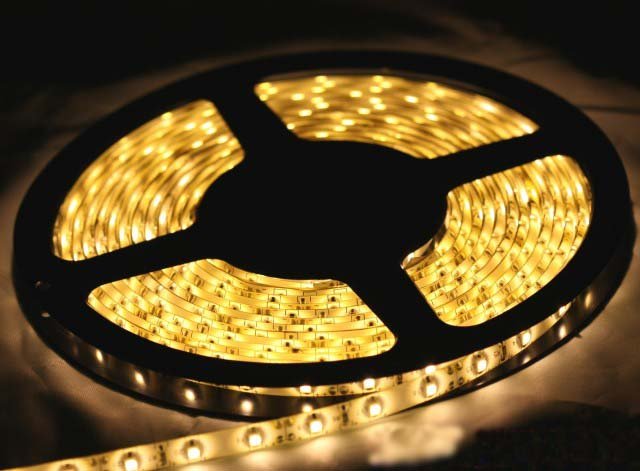
Cool White
Cool White LEDs provide a more modern and clean bright light with and is very slightly blue in colour. They measure between 4000-5000K.
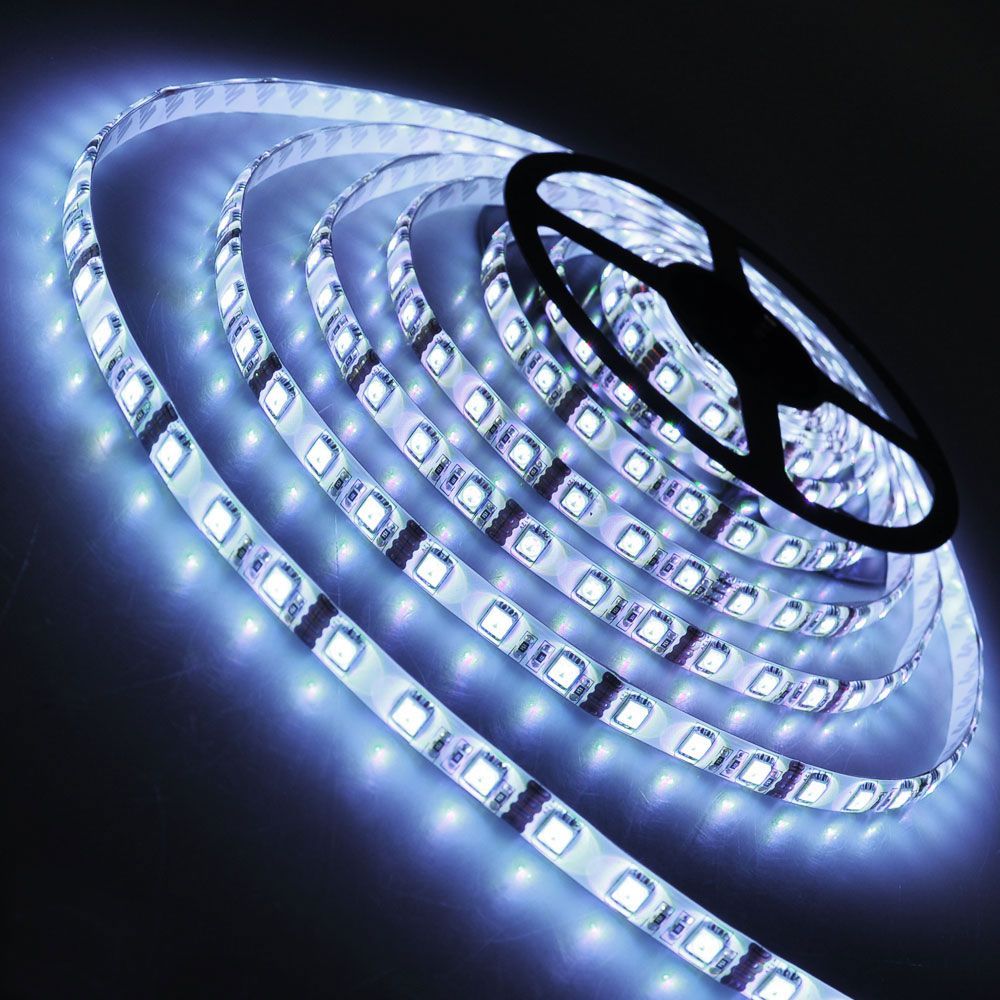
RGB
If you’re looking for something a little different and white just isn’t for you, then you can opt for an RGB (Red, Green, Blue) LED strip which will allow you to choose from about 25 colours on a remote control or just about ANY colour using a smartphone!
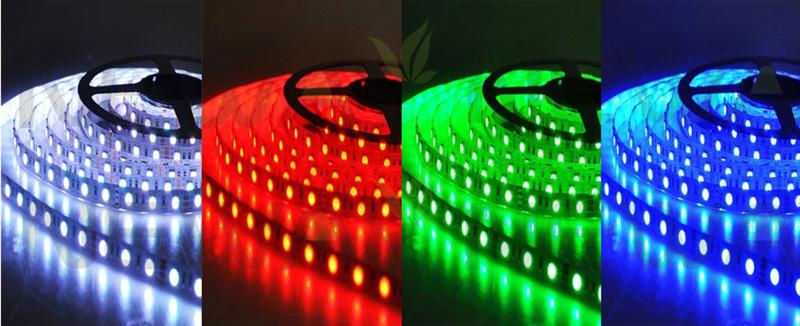
With this option you can choose your colour depending on your mood and even have a disco with some colour fades and strobing!
Final Thoughts
Lighting really does play a big part in getting your new kitchen right. It can make a real difference to the overall look and feel so its important to consider the options. Make sure you speak to your kitchen designer about what can be integrated into the kitchen and to your building contractors about the wiring required. Doing all of this during the design and planning phase will help to avoid mistakes like missing wiring and power points. Lighting should be considered along with all other electrical requirements for your kitchen like appliances, wall sockets, pop-up sockets and boiling water taps.

